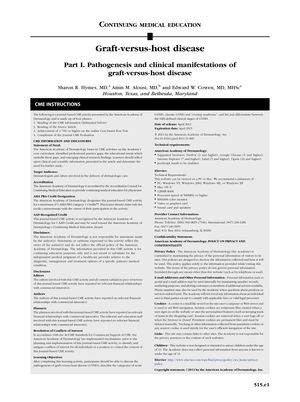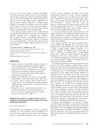Graft-Versus-Host Disease: Comprehensive Overview by the American Academy of Dermatology
April 2012
in “
Journal of the American Academy of Dermatology
”

TLDR Graft-versus-host disease is a complication where donor immune cells attack the recipient's body, often affecting the skin, liver, and gastrointestinal tract.
The document from the American Academy of Dermatology provides a comprehensive overview of graft-versus-host disease (GVHD), a complication of allogeneic hematopoietic cell transplantation (HCT). It explains that GVHD occurs when donor immune cells attack the recipient's tissues, with acute GVHD presenting symptoms in the skin, liver, and gastrointestinal tract, and chronic GVHD potentially affecting many organs, particularly the skin, oral mucosa, and eyes. The incidence of acute GVHD ranges from 20% to 70%, while chronic GVHD occurs in about 60% to 70% of recipients. The document discusses the pathogenesis of both acute and chronic GVHD, emphasizing the role of B cells and the cytokine BAFF in chronic GVHD, and the clinical response to rituximab in steroid-resistant patients. It also details the skin manifestations of chronic GVHD, which occur in about 75% of patients, and the importance of accurate diagnosis and staging, referencing the NIH Consensus Criteria. The document does not provide specific participant numbers but focuses on the broader clinical aspects of GVHD.



